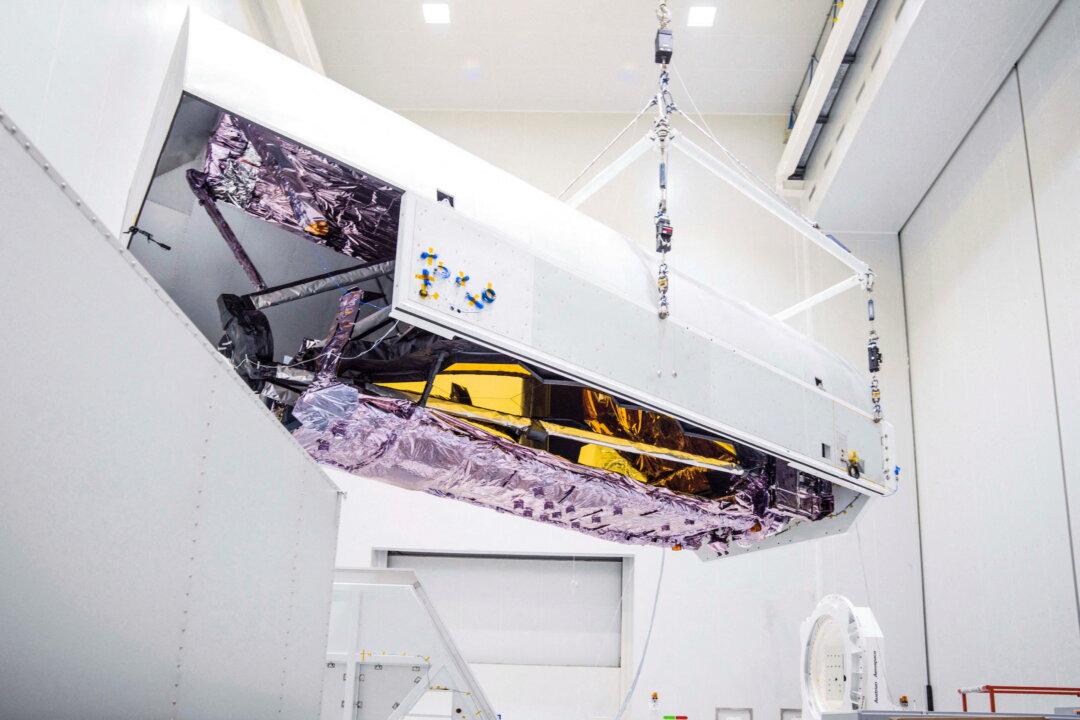WASHINGTON—It was finished years late at a cost far higher than planned, but NASA’s James Webb Space Telescope due for launch next week may usher in a new era in astronomy as it gathers information on the universe’s past, star formation, and whether planets beyond our solar system may be suitable for life.
The orbiting infrared observatory, designed to be about 100 times more sensitive than its Hubble Space Telescope predecessor, is due to blast off on Dec. 22 on an Ariane 5 rocket from a site in French Guiana on South America’s northeastern coast.





